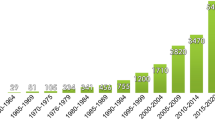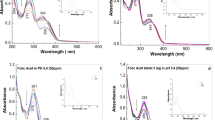Abstract
IN the course of the investigation of the fluorescence of fluorite conducted in the Institut fur Radiumforschung, Vienna1, it seemed desirable to determine the distribution of excitation in fluorite for the blue Eu + + band.
This is a preview of subscription content, access via your institution
Access options
Subscribe to this journal
Receive 51 print issues and online access
$199.00 per year
only $3.90 per issue
Buy this article
- Purchase on Springer Link
- Instant access to full article PDF
Prices may be subject to local taxes which are calculated during checkout
Similar content being viewed by others
References
See the report by K. Przibram in Z. Phys., 102, 331 (1936); 107, 709 (1937); and also NATURE, 141, 970 (1938).
Groot, W. de., Arch. Neerland., iiia, 7, 207 (1924), had already found two regions of excitation in fluorite: below 230 mµ and between 340 and 380 mµ.
Author information
Authors and Affiliations
Rights and permissions
About this article
Cite this article
ECKSTEIN, H. Distribution of Fluorescence Excitation of Bivalent Europium in Calcium Fluoride and of Bivalent Samarium in Calcium Sulphate. Nature 142, 256–257 (1938). https://doi.org/10.1038/142256b0
Published:
Issue Date:
DOI: https://doi.org/10.1038/142256b0
This article is cited by
-
Verf�rbung und Lumineszenz durch Becquerelstrahlen V nebst verwandten Erscheinungen
Zeitschrift f�r Physik (1951)
Comments
By submitting a comment you agree to abide by our Terms and Community Guidelines. If you find something abusive or that does not comply with our terms or guidelines please flag it as inappropriate.



